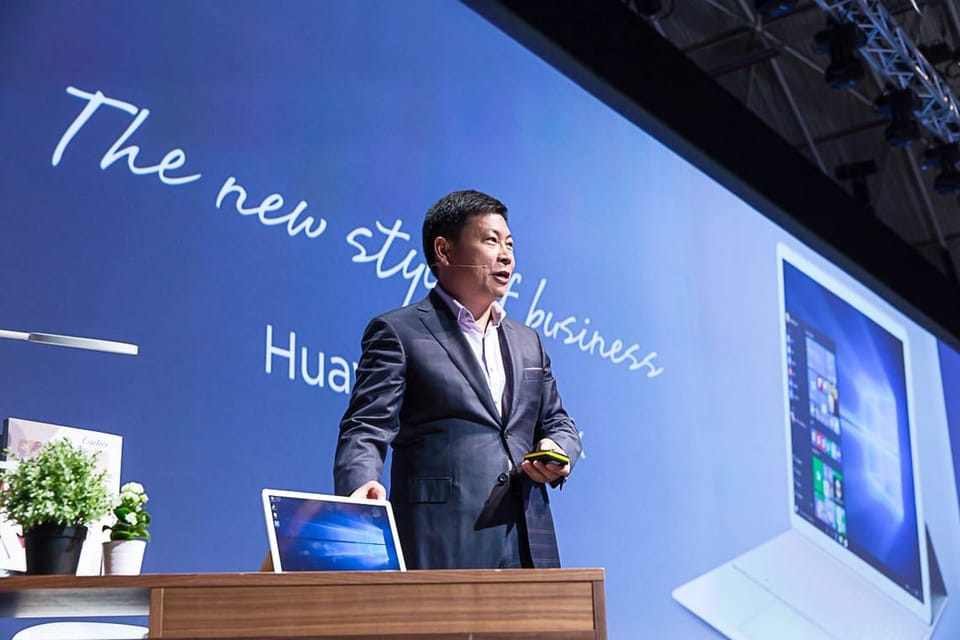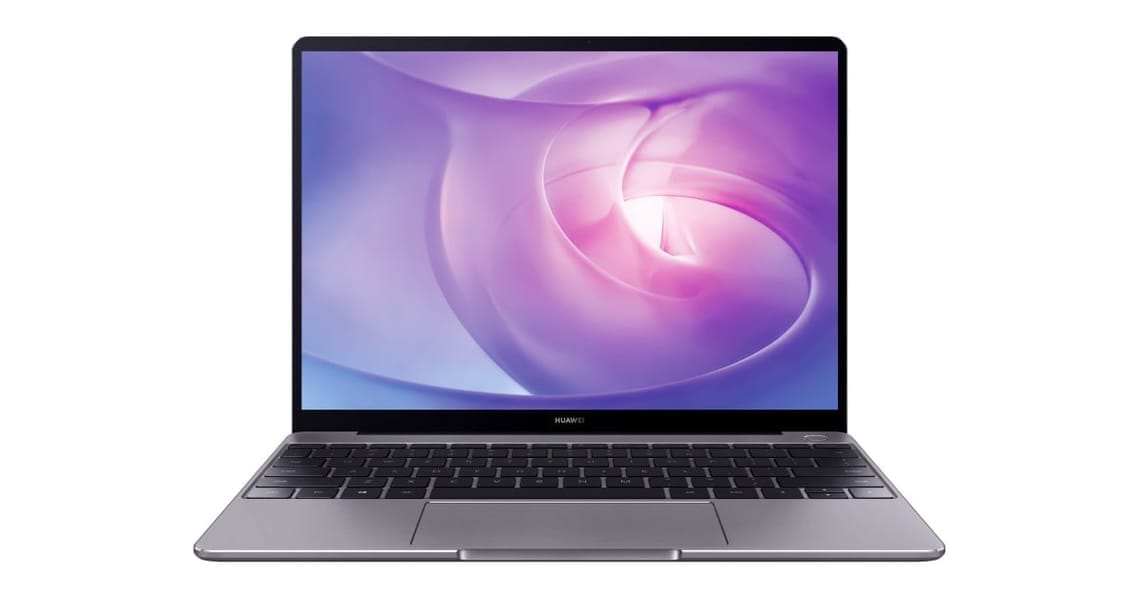Huawei MateBook compared: MacBook Air and Microsoft Surface

Huawei pitched its 2020 Matebook 13 as an Apple MacBook Air alternative. That’s not my words, it is a direct quote from Huawei consumer chief executive Richard Yu, who made the comparison at the product launch at Mobile World Congress in Barcelona.
Comparisons with Apple are a big deal at Huawei. The company wants to be China’s Apple.
While there are similarities between the Matebook and the MacBook Air, it’s not a direct comparison. Few people would choose directly between the two. Apart from anything else, Huawei runs Windows 10, while the MacBook Air runs macOS.
Switching between operating systems is not something you’d want to do every upgrade.
Individuals choose to buy Apples. Huawei's strategy is to target enterprise buyers.
A more direct comparison is between the Matebook and Microsoft's Surface line of computers and tablets. We'll look at that later.
First, how does Huawei's 2020 Matebook 13 compare with the Apple MacBook Air?
Matebook 13 versus MacBook Air
Huawei's MateBook offers the most MacBook Air-like experience in a Windows laptop.
The Matebook 13 sells for NZ$2200. It has an Intel i7 processor. There are an Nvidia MX250 graphics processor, 16GB of Ram and 512GB of storage.
The nearest equivalent MacBook Air costs NZ$2350. It has the same 512GB of storage. You get 8GB of Ram and an i5 processor.
Given the specifications, it is no surprise the Matebook handles processor intensive work better than the MacBook Air. To be fair, Apple doesn’t pitch the Air as a computer for intensive work, the company points power hungry users at the MacBook Pro models.
In testing, the Matebook beat the Apple for video editing. Otherwise there was less difference that you might expect give the different processors and amounts of Ram.
Simple or complex?
If you use a laptop for simple tasks like, writing or answering emails, then the performance gap between the two is academic. You won't notice which is faster. That changes as you throw more work at the computers. The more powerful Matebook 13 does a better job with, say, manipulating large Excel spreadsheets or complex calculations.
The MacBook hard drive is much faster than the Matebook 13’s drive. The MacBook Air stores files in about half the time it takes on the Matebook 13.
When it comes to graphics, the MacBook Air beats the Matebook 13. The 13.3 inch screen has 2560 by 1600 pixel resolution. The Matebook screen is a fraction smaller at 13 inches and has a 2160 by 1440 resolution. If you compare the two side by side, Apple’s display is far more impressive.
Apple wins by a long margin on battery life. You can work on a MacBook Air for ten hours between charges. In testing the Matebook 13 ran out of juice a few minutes before the six hour mark.
Portability
One strange point of comparison is with weight. Huawei’s specification sheet says 1.3kg. That’s as near as it can be to the MacBook Air which Apple’s tech sheet says weights 1.29kg.
When I picked the two computers up, the Matebook 13 felt heavier than the MacBook Air despite these specifications. I weighted them on kitchen scales. The MacBook Air was 1.3kg and the Matebook 13 was 1.4kg.
That goes part way to explaining the practical difference, but not the whole way. The Matebook 13 is smaller than the MacBook Air. It measures 286 by 211 by 14.9 mm. The Air is 304 by 212 by 16 mm. Which means the Huawei computer feels heavier because it is denser.
This could be nitpicking, until you put the two computers in bags and carry them around all day. Both are light and easy to carry. Yet you’ll notice the Matebook 13 a fraction more than you’ll notice the MacBook Air.
Small and neatly formed
Both Apple and Huawei take a pride in build quality. The Matebook 13 almost hits the MacBook Air standard.
There are two places where it fails. First, the power button which doubles as a fingerprint reader.
Apple’s square Touch ID sensor sits at the top right of the keyboard. It feels like any other key. Huawei’s round button sits north of the top right of the keyboard and doesn’t have the same solidity as Apple’s key. There’s a small amount of wobble. You can live with it, but it shows Huawei doesn’t achieve Apple levels of attention to detail.
A more obvious annoyance is the Huawei Share sticker on the keyboard’s bottom right. This is next to the as disfiguring and tacky Intel advertising sticker.
It’s amazing, computer makers go to extreme lengths to design sleek, beautiful hardware and then spoil the effect with stickers. Many are needless aesthetic wreckers, the Huawei Share sticker is not. It has a function.
Integration
Huawei Share lets you connect your Matebook 13 to a Huawei phone. The idea is loosely similar to the features that let Mac owners swap files and photos with iPhones or iPads. When you’re working with a Matebook, these Apple-Huawei comparisons are never far away.
Unlike Apple’s phone-computer integration, Huawei Share mirrors your phone’s screen on the laptop screen. I can’t think of why this might be useful, but you might find a purpose for it.
It has to be a Huawei phone. That’s an oddity right there. Huawei may be New Zealand’s third favourite phone brand, but it enjoys, at best, a ten percent market share. If you draw a Venn diagram of the New Zealanders who have both a Huawei laptop and phone, it’s unlikely the overlap would be more than a couple of hundred.
A few last comparisons that don’t fit elsewhere. On paper both the Matebook 13 and the MacBook Air have the same WiFi specifications. In practice, the MacBook’s WiF works better over longer distances. I connected both to remote servers via home WiFi and saw better speeds on the MacBook Air. I can speculate on why this is, but a proper answer is beyond the scope of this story.
Like Apple, maybe because of Apple, Huawei has gone for port minimalism. There are two USB-C ports and a 3.5mm headphone jack. You can only charge the computer using the left-hand USB-C port.

Matebook 13 versus MacBook Air verdict
You get more computer for less money with the Huawei MateBook 13. You’ll be hard-pressed to tell the performance apart despite the specifications. That is unless you run demanding apps. If that’s you, then you’ll appreciate the more powerful Matebook.
Apple’s MacBook looks and feels nicer; it has a better screen and way more battery life. Which means if you don’t need more processing grunt, it could be a smarter buy.
And yet few would choose between a Matebook 13 and a MacBook Air on these criteria. If you prefer Windows 10 or have to use it for work, the Matebook 13 gives you the most MacBook Air-like Windows laptop experience.
Matebook 13 compared with the Surface Pro
Microsoft’s Surface Pro has been the best Windows computer money can buy. Now it faces direct competition from Huawei.
Like the Surface, Huawei’s MateBook is a similar thin, light hybrid with a 12-inch display. It follows the same basic format as the Surface: A tablet with a theoretically separate keyboard that everyone is going to buy anyway.
Matebook comes with a similar range of processors and memory configurations. Like the Surface Pro, there’s a stylus, although Huawei’s also includes a laser pointer.
The Matebook even resembles a Surface although there is also a nod of the head to Apple’s iPad Pro design. One nice touch is the fake leather keyboard case.
Perhaps the most important feature is that the Matebook is priced at about 75 percent of Microsoft’s prices. That’s enough to make a difference.
This isn’t a direct comparison between the two, Microsoft’s Surface Pro has a 2736 x 1824 pixel screen. The Matebook has a lower resolution at 2160 x 1440 pixels, but it also has the same fingerprint sensor technology used on Huawei’s phones. Huawei says its Core m model runs faster than Microsoft’s Core m Surface Pro.
Huawei has followed Microsoft’s practice of charging extra for a keyboard, stylus and dock. A Huawei New Zealand representative told me that when it reaches the country the Matebook will probably be sold bundled with a keyboard.
Member discussion